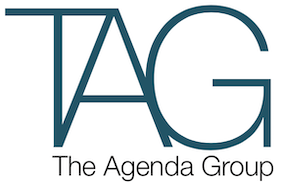Melburnians take great pride in being rated as one of the most liveable cities in the world. But challenges to Melbourne’s liveability loom on the horizon.
How do we manage a rising population while at the same time ensure there is universal access to the infrastructure required to support a decent standard of living?
It is well known that in order to build a strong community you need more than bricks and mortar.
New and growing communities need quality ‘hard infrastructure’ such as public transport and roads and access to good water supplies, and ‘social infrastructure’ such as open space, community facilities and health services.
Development contributions have evolved as an important tool for helping fund local infrastructure.
The ‘user pays’ mechanism of levying development contributions has grown in usage and cost on the urban fringe of Melbourne.
However there has not been a corresponding increase in the usage of development contributions to fund growth in established urban areas, leading to pressure on existing infrastructure, funding gaps and intensified community resistance to higher density development.
This is why I was interested to attend the recent PIA event detailing the work of the Standard Development Contribution Advisory Committee that is advising the Victorian Government on its draft framework entitled A new Victorian Development Contributions System – A Preferred Way Forward.
The PIA event featured three members of the 5 person Committee established to conduct consultation with stakeholders and provide advice on a new contributions system. Kathy Mitchell (Chair), Chris De Silva and Rodger Eade all gave generously of their time answering a wide range of questions from the floor.
The committee members outlined the problems of the current system which include that it is expensive and time consuming to administer, overly complex, inflexible and doesn’t provide certainty for councils or developers.
Report 1 Setting the Framework makes a range of findings.
Key elements of the proposed framework include:
- Provision for three Development settings: Growth Areas, Urban Areas and Strategic Development Areas (large and small scale).
- New infrastructure categories:
– Community and Recreation infrastructure (levy is fixed)
– Transport infrastructure (levy can be varied)
– Drainage infrastructure (levy can be varied) (only applies outside metro areas)
– Public land (levy can be varied)
- A new Standard Levy as the default, but with the opportunity to apply a tailored Development Levy Scheme (DLS) (in Growth Areas and Large Scale Strategic Development Areas) if strategically justified.
- A List of Allowable Items will be proposed for each infrastructure category and each development setting.
These flagged reforms are a step in the right direction underpinned by an objective to provide a fairer and simpler system.
However overcoming the deficiencies of the current system is not without its challenges as the Committee members discussed. While there is a general agreement that a standardised levy is a good reform, what rate or ranges of rates are struck is clearly central to its successful operation. If the standardised levies for the various infrastructure categories are set too low there will be little take up from local government. Conversely if the rate is too high there will be concerns about a negative impact on housing affordability.
Similarly finalising the list of inclusions of allowable items for each category of infrastructure and for each development setting will be crucial to making the system workable. This is especially the case in urban areas where, as an example, a development may not be large enough to trigger a new playground, but may instead justify some improvements such as additional equipment. Enabling a tailored approach balanced with a tightly defined scope and standards will be no easy task.
Further challenges include ensuring the system is reviewed regularly to remain responsive to change, and for the standard levy to be activated through a simpler mechanism that than a planning scheme amendment.
Whether the new DCL’s will be capped or not and how the levies apply to industrial, commercial and retail developments also needs resolution.
The draft framework does not address the disconnection between land use planning and infrastructure provision in Victoria. Even with standardised levies there is still a clear need for better coordination between statutory bodies such as Melbourne Water and VicRoads.
The Committee will submit its Stage 2 Report Setting the Levies to the Planning Minister by 31 May 2013 for consideration. It is critical that this process results in a fairer and more workable development contributions system that helps meet the burgeoning costs of urban infrastructure in the 21st century.
